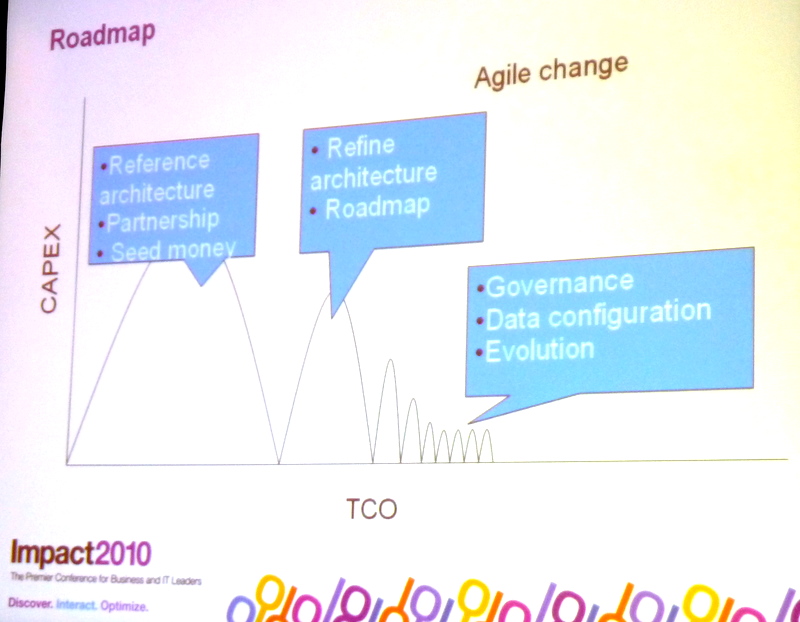Originally posted on 04May10 to IBM Developerworks (9,176 Views)

Telus is a Communications Service Provider in Canada, the second largest in their market with 12M connections (wireline, mobile and broadband). Telus have a very complex mix of products, services and systems and they need to maximise their investments while still be able to grow and maintain a lid on their costs. New projects still need to be implemented through good times and bad, so they need an architecture that will allow Telus to continue to grow and maintain costs through a range of economic conditions. Telus selected an agile method/strategy where a reasonable investment early on with the plan to become agile and support new ‘projects’ through small add ons in terms of investment. Ed Jung from Telus characterised the ‘projects’ in the later stages as rule or policy changes which may or may not require a formal release.
To achieve this agility, Telus are using WebShere Telecom Content Pack (WTCP) as an accelerator to keep costs down, while still maintaining standards compliance for their architecture. He sees key success factors as:
Selecting a key implementation partner (IBM)
Using standards where possible to maintain consistency
For Telus, they elected to start with fulfilment scenarios within their IPTV system. The basis for this is a data mapping to and from a common model – within the TeleManagement Forum’s standards, that relates to the SID. Ed sees this common model as key to their success.
Dynamic endpoint selection is used within Telus to enable their processes to integrate and participate with their BPM layer. Ed suggest the key factors for a successful WTCP project are:
- Adopt a reference architecture
- Select a good partner
- Seed money for lab trials
- Refine architecture
- Choose correct pilots
- Put governance in place (business and architects)
- Configure data / reduce code
Ed thinks that last point (configure data / reduce code) is the best description of an agile architecture that really drive lower total cost of ownership for projects as well as a lower capital expenditure for each project.

